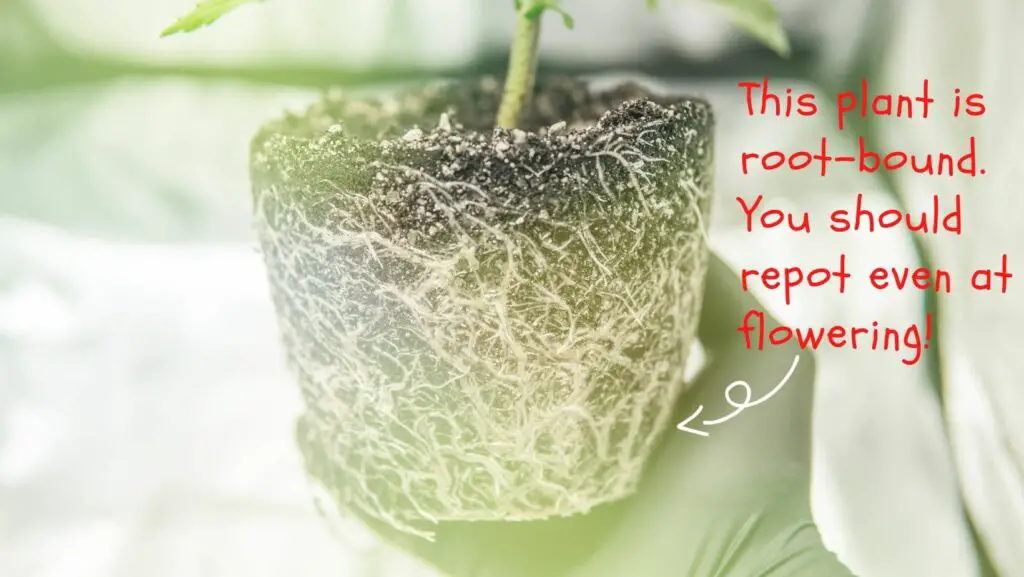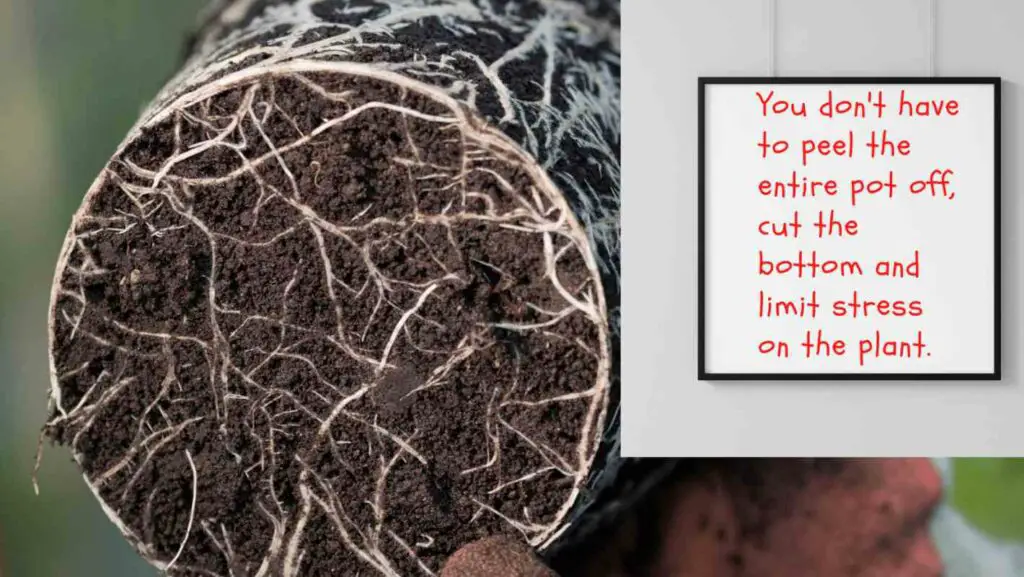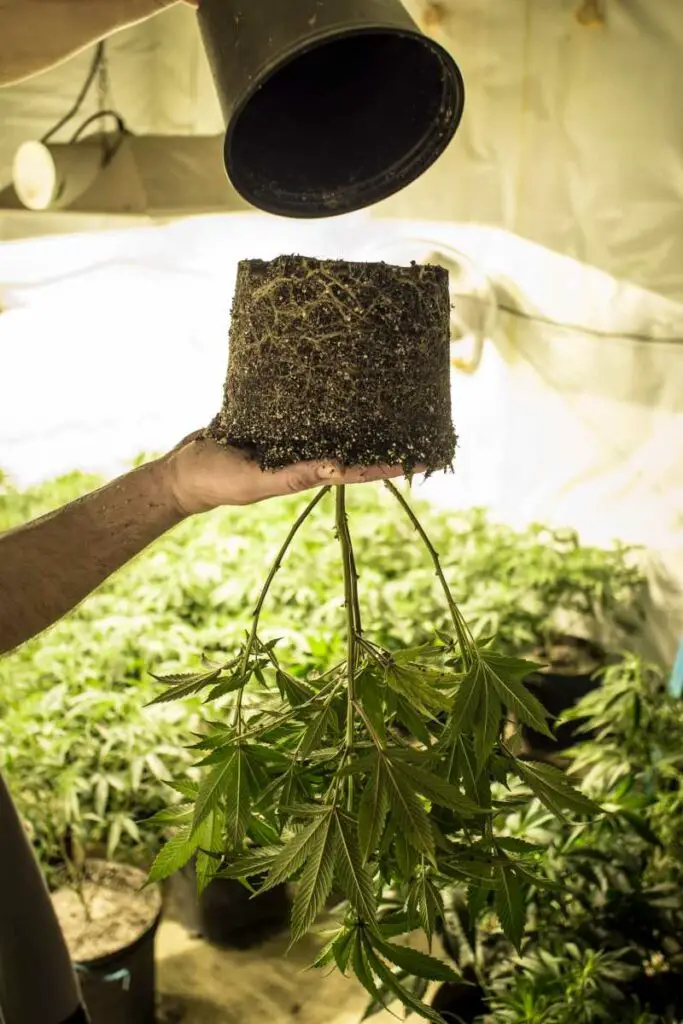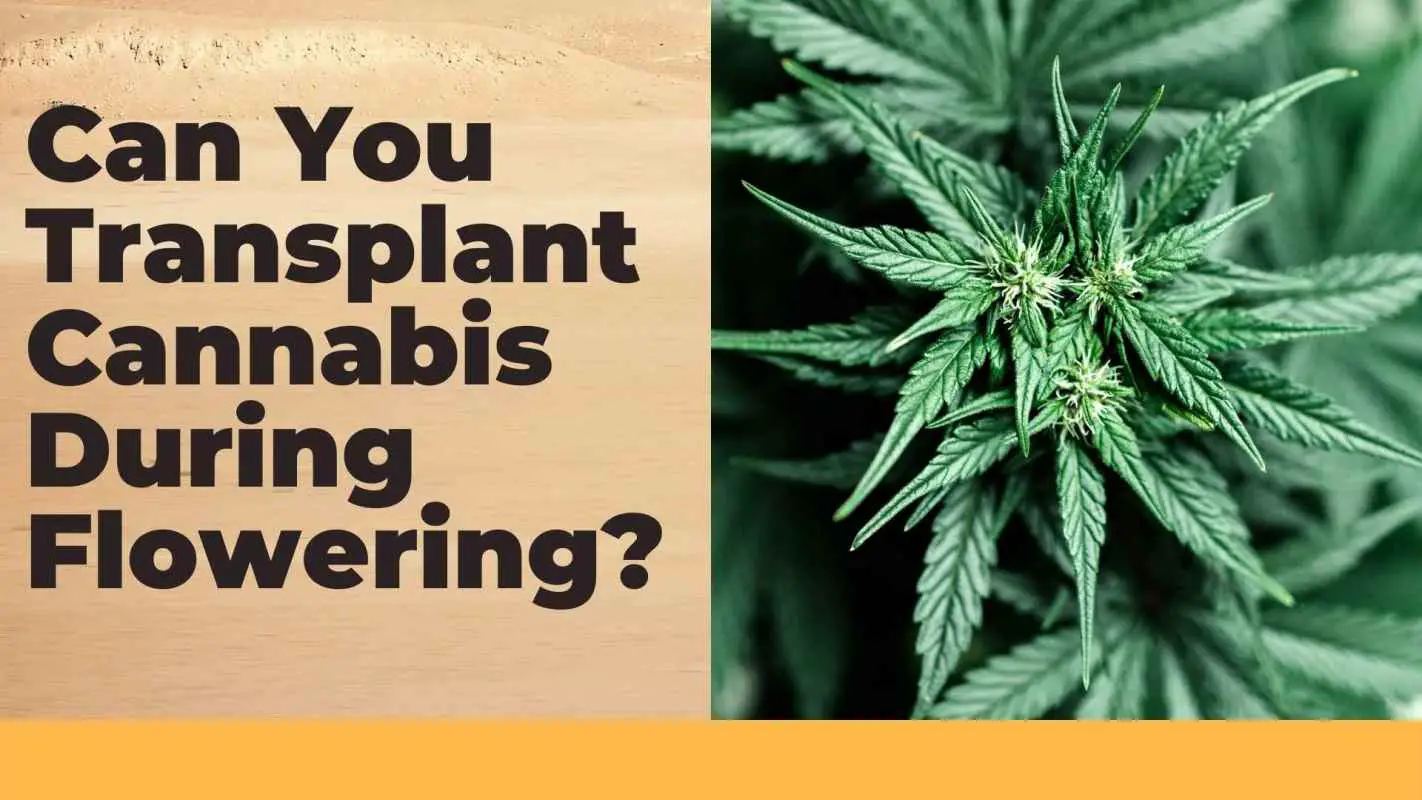Transplanting during flowering is fraught with risks. The plant is at a vulnerable state as it has shifted its energy from vegetative growth to bud formation.
Repotting is a necessary procedure when your cannabis plants outgrow their pots, but you have a lot to lose during flowering.
However, leaving your plants to continue flowering when they’re already rootbound can reduce your yield considerably.
Flowering plants continue to grow, and they need a healthy root system to reach their maximum potential.
While others choose to grow in huge pots initially, starting in pots too big for the small plant can be disastrous.
If the pot is too big, the plant’s roots may not get all the nutrients from the grow medium because they’re too short to reach them on the farthest corners of the big pot.
Also, plants grown in too big pots are prone to root rot. Therefore, moving from 2-gallon pots to 5 is better for the plant than moving from a 2-gallon pot to 10-gallon pots directly.
If you intend to veg longer, it’s better to re-pot multiple times than to use a pot too big for the plant.
Can You Transplant Cannabis During Flowering?
You can transplant cannabis plants during flowering. Problems only begin when you disturb the roots. If you can do it gently, the plant will barely notice it moved.
The roots are the only contact to the pot that matters. The other parts of the plant still have their supply; everything continues.
The stress of transplanting has a lot to do with the plant’s access to nutrients. If you transplant a small plant into a pot too big, the nutrients will be washed too far from the roots.
The plant shall have to grow its roots a little to reach all the nutrients. That’s why sometimes the plants stagnate when transplanted.
The pot size you’re transplanting it to makes a huge difference. Keep that in mind when transplanting. The nutrients should be as close to the roots as possible. That way, the plant doesn’t stress.

Grow pots that are too big for the plant also make it prone to root rot. With bigger pots, the roots won’t reach all the water in time. This causes waterlogging, which causes root rot.
The roots are the factor here. If you keep your hands off the roots and just move them without a bruise, the plant will continue without a halt.
Transplanting a flowering plant isn’t something you want to try as a newbie. Any slight tampering with the roots can hurt your plant and your yields.
ProTip: Gently cut the bottom of the pot your transplanting from and put it into the bigger one that’s already filled with medium. The plant will grow roots into the bigger pot. To make the cut easier, use an adjustable blade, heat the blade over a candle if necessary.
If the plant is rootbound, the soil will cling the roots together, and when you cut the bottom, they remain untouched.

Still, some strains are more sensitive to even the least stress. For that reason, avoid transplanting during flowering.
During flowering, the plant has changed completely from the vegetative state. Therefore, growing new tissues to heal the part you severed takes longer and more labor.
RELATED READ: Plant Pot Size vs. Yield: Does Pot Size Affect Yield?
The Stage Of Flowering Matters
Immediately you begin to flower, the plant will continue growing a little. We call this the stretch period.
Transplanting during this stage is less risky because the plant is still growing, and the severed root tissues heal faster.
You shouldn’t transplant too late into flowering. The plant will be pretty big, too big to handle gently. The shock can stagnate the flowering progress, resulting in small buds. Depending on your skill level, this plant might also need a little time to adjust to the new environment. This might eat into the bud nourishing time, and if you can’t extend budding time, you’ll harvest smaller buds.
How Late In Flower Can You Transplant Cannabis?
The plant is still in the stretch at two weeks into flowering and thus less risky for transplanting. If you can’t do it then, try the third week. 4th week into flower onwards is late.
Transplanting in the earlier stages increases your chances of success in many ways. First, the plant is a little smaller, hence easy to handle with minimum stress.
Older plants, when rootbound, hold onto the pot, and you’ll have to knock the bottom of the grow pot to release it.
You have to hold the plant upside down and knocking the other end of the pot to know how turbulent it is. The pressure can release the soil from the roots— the thing you’re trying to avoid!
Also, being in the stretch phase, the plant heals faster, and the roots grow during the stretch. This improves the roots’ access to nutrients in the bigger pot.
Earlier into flowering, the plant is also less susceptible and can handle much stress. The further they delve into flowering, the more you should avoid stressing them.

Do Roots Grow During Flowering?
Roots continue to grow during flowering. During the first weeks of flowering the roots grow at normal rate, then slow down at mid-flowering to focus all the energy to growth and nourishment of buds.
If the roots weren’t growing during flowering, there wouldn’t be a need to transplant during flowering.
Still, it is at the vegetative phase where the roots grow more aggressively. At the veg stage the plant is preparing for the flowering period, and the roots need to be as robust as possible to sustain the plant’s nutrient needs.
So, Is It Bad To Transplant During Flowering?
You can transplant your plant during flowering without hurting its progress. But it is a risk you should avoid because some strains are super sensitive, and the slight change can stress them for a week.

In summary, always transplant during veg. As the plant enters the flowering stage, it grows massively, and it needs root space to sustain this growth.
Having your plants in their final pots at the end of vegging saves your plant the transplanting stress.

